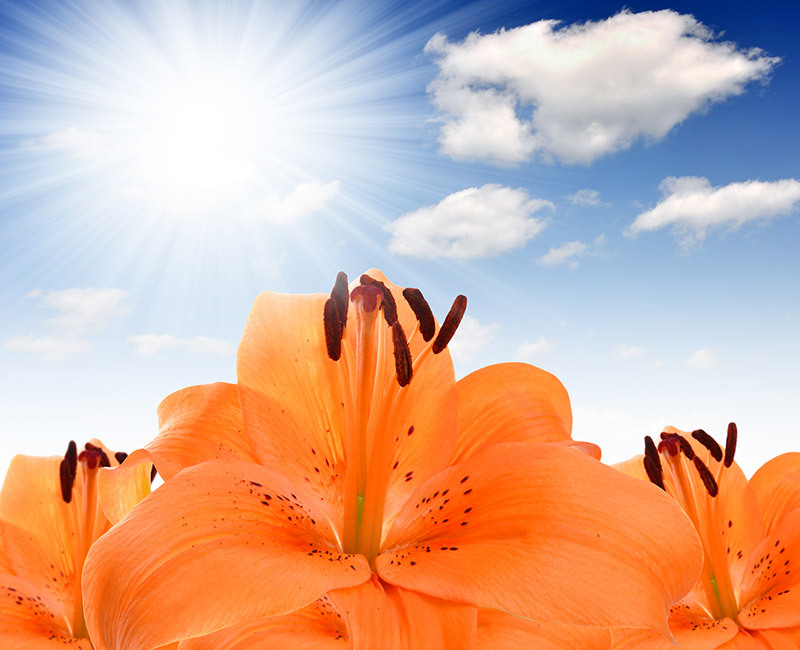7 Lesser-Known Facts About Tulips Revealed
Posted on 04/07/2025
Tulips are among the world's most adored spring-blooming flowers, celebrated for their dazzling colors and elegant shapes. But beneath their well-known beauty lies a fascinating history and some intriguing secrets. Did you know that beyond the gardens of Amsterdam and the paintings of master artists, tulips have woven themselves into the fabric of culture, economy, and science in surprising ways? Whether you're a gardening enthusiast or simply enchanted by these blossoms, you'll want to discover these seven lesser-known facts about tulips!
1. Tulips Didn't Originate in the Netherlands
When you think of tulips, your mind may immediately picture the endless fields in the Dutch countryside. However, the origins of tulips can be traced far from Europe. Experts agree that tulips were first cultivated in Central Asia, particularly in regions that today form parts of Kazakhstan, Uzbekistan, and Tajikistan.
Historical Journey of Tulips
- Wild tulip species were originally found growing on mountainous slopes.
- They caught the attention of the Ottoman Empire, especially in Turkey, where sultans prized them as symbols of perfection.
- Eventually, tulips made their journey westward, reaching the Netherlands in the late 16th century, where they quickly became a horticultural sensation.
Fun Fact: The Turkish word for tulip, "lale," is still used today and symbolizes abundance and indulgence.

2. Tulip Mania: The World's Earliest Economic Bubble
When discussing the history of tulips, it's impossible to ignore the phenomenon of Tulip Mania. This event occurred during the Dutch Golden Age in the early 17th century and is often cited as the world's first speculative financial bubble.
The Hype of Tulip Trading
- At their height, some rare tulip bulbs sold for more than the price of a luxurious house in Amsterdam.
- People of all classes entered the tulip trade, hoping to capitalize on skyrocketing prices.
- The market eventually collapsed in 1637, causing economic turmoil and financial losses for many investors.
Did You Know? The term "tulip mania" is now used as a cautionary descriptor for any speculative market bubble.
3. Tulips Come in Almost Every Color--Except True Blue
Tulips' vibrant color palette is renowned, distinguishing them from many other popular flowers. You can find tulips in almost every shade, and some even display a combination of multiple colors due to unique genetics and breeding.
The Science of Tulip Colors
- Genetic variation and selective breeding have produced tulips in red, yellow, pink, purple, orange, white, and even nearly black.
- While breeders have tried for centuries, a genuine blue tulip remains elusive -- the pigments necessary for true blue simply do not exist in the genus Tulipa.
- Some hybrids are called "blue," but they usually display violet or purplish hues.
Interesting Fact: The absence of true blue only adds to the mystique and desirability of blue-tinged varieties in gardens and displays.
4. Tulip Petals Are Edible (But Use Caution!)
While you may admire tulips for their beauty, you might be surprised to learn that their petals are actually edible. During times of hardship--especially in World War II--tulip bulbs and petals were used as a food source in the Netherlands when other supplies were scarce.
What Do Tulip Petals Taste Like?
- Petals have a mild taste, often compared to lettuce or peas.
- They are sometimes used as garnishes for salads and desserts, or even stuffed with fillings.
- Important: Not all tulips are safe to eat. Some can cause stomach discomfort or allergic reactions.
If you ever wish to taste a tulip petal, be sure they come from organic,
5. Tulips Have Surprising Cultural Symbolism Worldwide
Tulips have significance far beyond their visual appeal. Tulip flowers play meaningful roles in the art, culture, and traditions of various countries.
Tulip Symbolism in Different Cultures
- Turkey: Symbolizes purity, paradise, and abundant life. Featured in Ottoman art and architecture.
- The Netherlands: Represents love, national pride, and rebirth after winter.
- Iran and Central Asia: Often associated with martyrs and used as memorial symbols.
- Western floristry: Each tulip color carries its own meaning (e.g., red for true love, yellow for cheerfulness).
Did you know? The annual Tulip Festival in countries like Canada commemorates the Netherlands' World War II gratitude with thousands of tulip bulbs, representing international friendship.
6. Some Tulips Have a Dramatic "Broken" Color Effect Due to a Virus
Some of the most extraordinary tulip varieties from history--featured in Dutch Golden Age paintings--display dramatic, feathered, or streaked color patterns. Originally, gardeners prized and sought after these "broken" blooms, not realizing their uniqueness was the result of a viral infection.
The Mystery Behind "Broken" Tulips
- The "broken" color patterns are caused by the Tulip breaking virus (TBV), which alters a tulip's natural pigmentation.
- While stunning, these infected tulips are more fragile, with decreased vigor and shorter lifespans.
- Modern gardeners seek similar effects using hybridization rather than viral introduction, as the latter can damage entire crops.
Fun insight: Iconic varieties like the "Semper Augustus" became legendary due to their rare, beautiful, and unpredictable streaks.
7. There Are Over 3,000 Registered Varieties of Tulips Globally
The number of unique tulip species and varieties continues to grow every year. Gardeners and breeders around the globe cultivate new hybrids that enchant collectors and flower lovers alike.
Tulip Classifications You Should Know
- Single Early: Classic bowl-shaped blooms, ideal for early spring gardens.
- Double Early: Extra layers of petals create a "peony" look.
- Triumph: Popular for their robust stems and a huge range of colors.
- Darwin Hybrid: Tall, large flowers with exceptional durability.
- Lily-flowered: Distinct flared and pointed petals.
- Fringed: Delicate, lace-like petal edges.
- Parrot: Wild, feathery blooms that resemble a parrot's feathers.
Did you know? New tulip cultivars are being bred to resist disease, thrive in different climates, and offer even more astonishing shapes and hues.
Bonus: Tulips in Modern Science and Environmental Research
Tulip flowers aren't just decorative--they're also used by researchers to understand plant genetics, pollination, and environmental change. Studies on tulip flowering times help scientists measure the impacts of global warming, as tulips are sensitive to shifts in temperature and daylight.
Modern Uses of Tulip Research
- Genetic mapping helps breed hardier and more diverse types of tulips.
- Phenology: Observing tulip blooming cycles provides valuable climate change data.
- Urban landscaping: Cities incorporate tulips for their aesthetic and their role in supporting pollinators in spring.
In summary, tulips are more than just a garden favorite--they're a window into history, nature, art, and even economics!

Frequently Asked Questions About Tulips
Are tulips easy to grow at home?
Yes! With proper care, tulip bulbs are easy for beginners. Plant them in the fall for a stunning spring display, ensuring well-drained soil and full sunlight.
Can I grow tulips in pots?
Absolutely. Choose a deep enough pot, use quality potting mix, and ensure bulbs don't sit in water. Container-grown tulips bring seasonal color to patios and balconies.
How long do tulip blooms last?
Most tulip flowers bloom for one to two weeks, depending on the weather. Cooler temperatures can prolong their vibrant display!
Conclusion: Why Tulips Are a Truly Remarkable Flower
Tulips continue to enchant and surprise garden lovers around the world. With a rich history spanning continents and cultures, a pivotal role in economic history, edible petals, elusive colors, and a dizzying array of cultivars, the humble tulip defies expectations. Remember these seven lesser-known facts the next time you admire a tulip field or receive a bouquet--they're more than just pretty flowers. They're living legends in the garden and beyond!
Intrigued by tulips? Explore more of the world's floral wonders, and consider adding some of these fascinating blooms to your next gardening project.
Latest Posts
Breathtaking Blooms That Last: Our Top 12 List
Your Birth Flower: A Petal-Perfect Insight Into Who You Are
Preserve Your Flower's Appeal with These 3 Easy Methods







